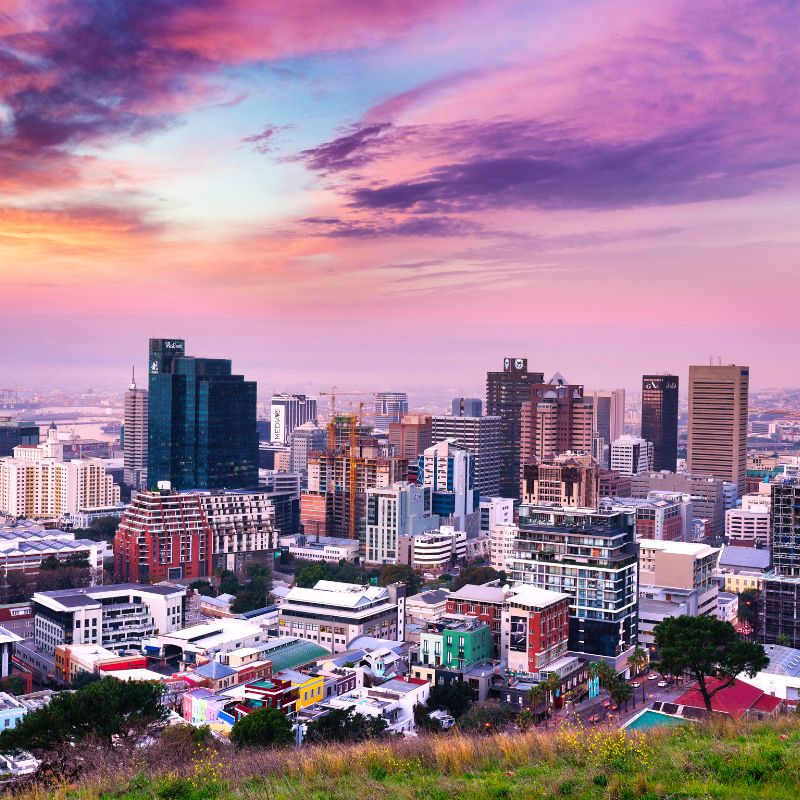
South Africa
Cape Town South Africa, boasts stunning landscapes, including Table Mountain and exquisite beaches. This city offers a combination of natural beauty and a lively urban culture.
Cape Town enthralls as one of Africa’s most captivating and diverse cities. It melds striking natural landscapes, a storied history, and a dynamic urban culture. Below is a more in-depth exploration of what distinguishes Cape Town as an extraordinary destination, coupled with a traveler’s firsthand experience.
Table Mountain – Cape Town South Africa
Table Mountain stands as one of Cape Town’s most iconic landmarks. It treats visitors to breathtaking views of the city, the coastline, and the adjacent landscapes. Explorers can opt for a hike to the summit or a cable car ride for a panoramic adventure. The trails accommodate varying levels of fitness, and reaching the summit grants visitors a sense of accomplishment and vistas that inspire awe.
Traveler’s Experience: Envision commencing your day with an early morning hike up Table Mountain. As you ascend, the city’s skyline progressively reveals itself, and the refreshing breeze carries the fragrances of the local fynbos vegetation. Also upon reaching the summit, expansive views unfold, stretching from the city to the ocean. As the sun descends, the city lights twinkle to life, crafting a truly enchanting ambiance.
Table Mountain is one of the most iconic natural landmarks in Cape Town and a must-visit attraction for anyone traveling to the city. Here are more details about Table Mountain, including its features, activities, and what you can expect when you visit:
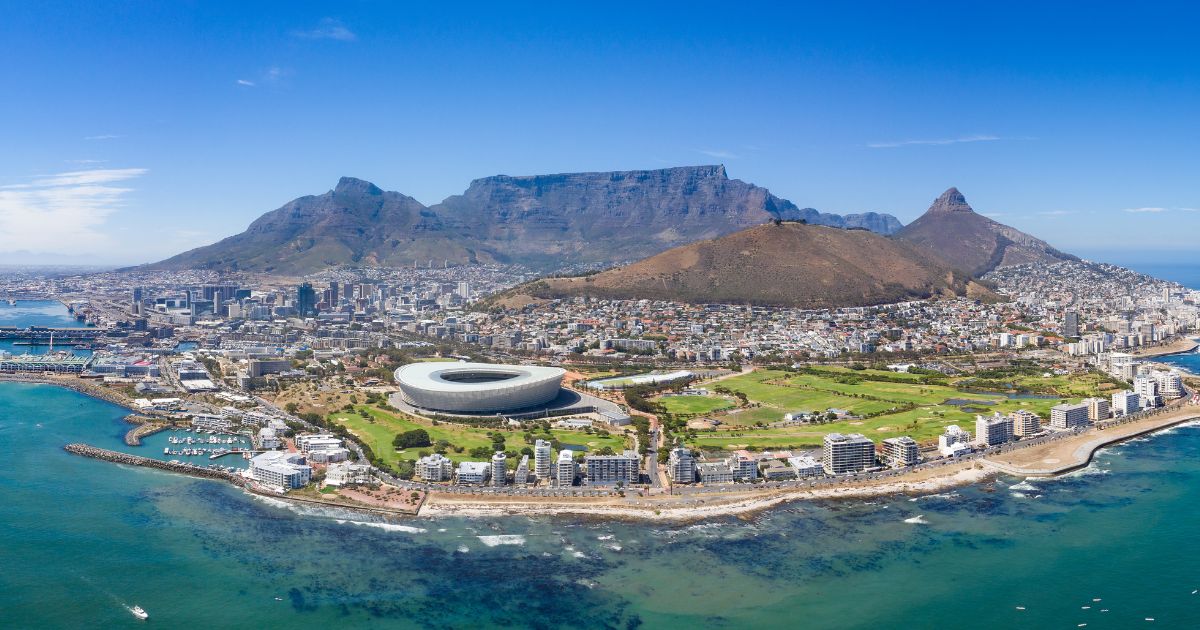
Formation and Features:
Table Mountain is a flat-topped mountain that dominates Cape Town’s skyline. It’s part of the Table Mountain National Park, which is a UNESCO World Heritage site. But the mountain is composed of sandstone and offers a unique geological formation that has eroded over millions of years to create its distinctive shape.
Cable Car Ride – Cape Town South Africa:
While some adventurous visitors may opt for a hike to the summit, the Table Mountain Aerial Cableway is the most popular way to reach the top. So the cable car offers a comfortable and scenic ride, rotating 360 degrees as it ascends, allowing everyone onboard to enjoy panoramic views of the city, coastline, and surrounding mountains.
Hiking Trails:
For those seeking an active adventure, Table Mountain offers several hiking trails of varying difficulty levels. The most popular routes include Platteklip Gorge, India Venster, and Skeleton Gorge. But hiking to the summit provides an up-close experience of the diverse flora and fauna found on the mountain.
Flora and Fauna:
Table Mountain is home to a rich variety of plant species, many of which are endemic to the area. Also the mountain’s unique microclimates have led to the development of the Cape Floral Kingdom, one of the world’s six floral kingdoms. You can expect to see colorful fynbos vegetation, including proteas and ericas. If you’re lucky, you might spot dassies (rock hyraxes) or even a Verreaux’s eagle soaring above.
Sunset and Sunrise – Cape Town South Africa:
Visiting Table Mountain during sunrise or sunset is a breathtaking experience. So the changing colors of the sky, combined with the city’s lights or the ocean’s reflection, create a magical atmosphere. Keep in mind that the cableway’s operating hours vary with the seasons, so it’s a good idea to check in advance if you plan to catch these stunning views.
Photo Opportunities:
Whether you’re a professional photographer or simply want to capture memories, Table Mountain offers countless photo opportunities. From the cable car platform to the viewpoints along the hiking trails, you’ll find picturesque spots to document your journey.
Weather Considerations:
The weather on Table Mountain can be unpredictable due to its elevation. Many township tours include visits to community projects and initiatives that aim to improve the lives of residents. The mountain features a phenomenon referred to as the “tablecloth,” in which clouds shroud the summit. If you encounter this, don’t worry – the views from below can still be spectacular, and the clouds add an ethereal touch.
Accessibility – Cape Town South Africa:
The cable car is wheelchair-friendly and allows people with limited mobility to enjoy the summit. There are also hiking trails suitable for various fitness levels.
Facilities:
At the summit, you’ll find a restaurant, gift shop, and restrooms. These facilities ensure that visitors can comfortably spend time exploring the top of the mountain.
Conservation Efforts:
Table Mountain National Park maintains a commitment to conserving its natural beauty and distinctive biodiversity. Visitors are prompted to adhere to the Leave No Trace principles and display respect for the environment by refraining from disturbing plants or animals.
Robben Island – Cape Town South Africa
The island’s historical significance primarily revolves around its former prison, which housed Nelson Mandela for 18 years. A guided tour provides insights into the struggles of South Africa’s past and the triumph of democracy. The experience is both educational and emotionally moving.
Traveler’s Experience: Taking a ferry to Robben Island, you can’t help but feel a mix of anticipation and reflection. The guided tour by a former inmate adds a personal touch to the experience, as they share stories of their time on the island. Being in the confined cell where Nelson Mandela was held elicits a deep sense of history and resilience.
Robben Island holds a significant place in South Africa’s history, particularly due to its association with the struggle against apartheid and the imprisonment of Nelson Mandela. Here are more details about Robben Island, its history, and what you can expect during a visit:
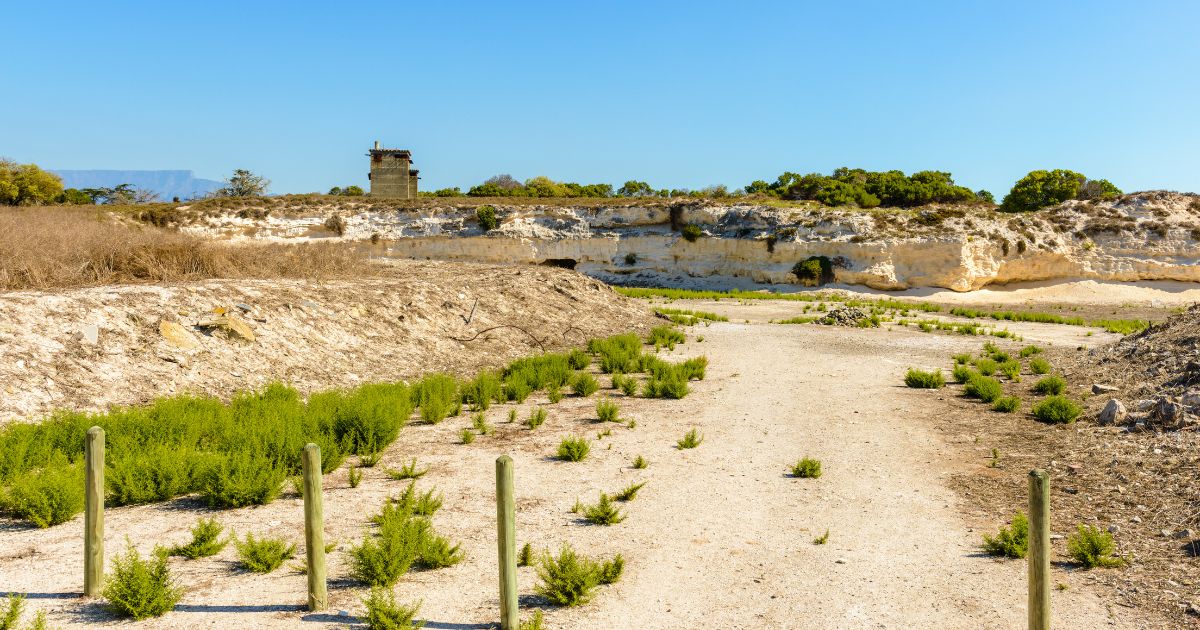
Historical Significance:
Robben Island is located in Table Bay, about 6.9 kilometers (4.3 miles) off the coast of Cape Town. It served as a place of banishment, imprisonment, and isolation for political prisoners, including many who fought against apartheid. The island’s most famous inmate was Nelson Mandela, who spent 18 of his 27 years in prison there.
Apartheid Era – Cape Town South Africa:
During the apartheid era, the authorities utilized Robben Island as a maximum-security prison to confine political dissidents, activists, and adversaries of the apartheid regime. Notable figures like Walter Sisulu, Govan Mbeki, and Ahmed Kathrada, in addition to Nelson Mandela, served their sentences on the island.
Guided Tours:
Today, Robben Island is a UNESCO World Heritage Site and a museum, offering guided tours that provide a comprehensive understanding of its historical significance. Tours are led by former political prisoners, providing firsthand accounts of life on the island and the struggle for justice and equality.
Prison Complex:
Throughout the tour, you will explore different sections of the prison complex, including the maximum-security facility where Mandela and his fellow inmates were confined. You’ll see prison cells, communal areas, and the limestone quarry where prisoners endured grueling labor.
Nelson Mandela’s Cell – Cape Town South Africa:
One of the most poignant stops on the tour is Nelson Mandela’s former prison cell. The small, sparse cell gives visitors a glimpse into the harsh conditions in which Mandela and others were held. Seeing this cell serves as a powerful reminder of the sacrifices made for freedom.
Personal Stories:
The guided tours include personal stories and anecdotes shared by former inmates, providing insight into the resilience and strength of those who endured imprisonment for their beliefs. These stories make the history come alive and highlight the importance of reconciliation and understanding.
Scenic Views:
Aside from its historical significance, Robben Island offers scenic views of Cape Town and Table Mountain from a unique perspective. The boat ride to and from the island also provides an opportunity to take in the beauty of the surrounding waters.
Educational Experience:
A visit to Robben Island offers an educational experience that goes beyond textbooks. It sheds light on the human rights struggles faced by South Africans and serves as a reminder of the importance of social justice and equality.
Booking and Logistics – Cape Town South Africa:
It’s advisable to book your tour to Robben Island in advance, as the ferry capacity is limited. Ferries depart from the V&A Waterfront, and the tour duration, including the ferry ride, is usually around 3.5 to 4 hours.
10. Respect and Reflection: Visiting Robben Island requires a respectful and reflective approach. The island’s history is complex and emotional, and taking the time to absorb the stories and the significance of the site is an essential part of the experience.
V&A Waterfront – Cape Town South Africa
The Victoria & Alfred Waterfront is a bustling hub of entertainment, shopping, dining, and cultural experiences. With a backdrop of Table Mountain, it’s a perfect blend of modernity and history.
Traveler’s Experience: Strolling along the waterfront promenade, you’re greeted by a lively atmosphere with street performers, markets, and luxury yachts in the harbor. You might find yourself drawn into art galleries or enjoying fresh seafood at one of the restaurants. As the sun sets, the harbor lights up, creating a dynamic and enchanting ambiance.
Victoria & Alfred Waterfront (V&A Waterfront) is a vibrant hub of activity in Cape Town, offering a mix of shopping, dining, entertainment, and cultural attractions. Here are more details about the V&A Waterfront and what you can expect to experience when you visit:
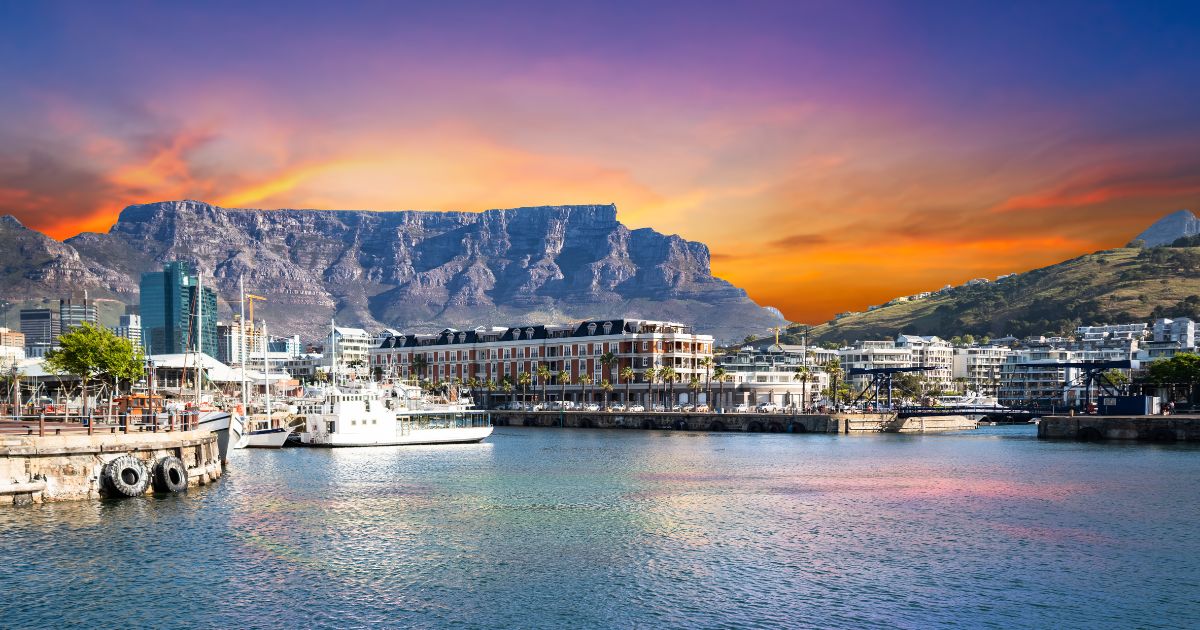
Historic Background:
Named after Queen Victoria and her son Prince Alfred, the V&A Waterfront is situated in the historic heart of Cape Town’s working harbor. What was once a trading port has been transformed into a bustling precinct that combines historical charm with modern amenities.
Shopping and Retail:
The V&A Waterfront is a shopper’s paradise, featuring a wide range of shops, boutiques, and stores. From well-known international brands to local artisanal crafts, you can find everything from fashion and jewelry to art and souvenirs.
Waterside Dining – Cape Town South Africa:
The waterfront boasts an array of restaurants, cafes, and eateries offering a diverse culinary experience. You can enjoy anything from gourmet cuisine to local South African dishes while taking in stunning views of the harbor.
Entertainment and Activities:
There’s no shortage of things to do at the V&A Waterfront. You can catch a movie at the cinema, visit the Two Oceans Aquarium, or even go on a seal-watching boat trip. The area is also known for hosting live performances, art exhibitions, and cultural events.
Silo District and Zeitz MOCAA:
The Silo District is a recent addition to the V&A Waterfront and features the Zeitz Museum of Contemporary Art Africa (Zeitz MOCAA). This cutting-edge museum showcases a vast collection of contemporary African art within a stunning architectural setting.
Ferris Wheel and Amusement Rides – Cape Town South Africa:
The iconic Cape Wheel, a large ferris wheel, offers panoramic views of the city, Table Mountain, and the ocean. It’s a great way to enjoy a bird’s-eye view of Cape Town’s landscape.
Robben Island Gateway:
The V&A Waterfront is the departure point for tours to Robben Island. The gateway includes an exhibition and memorial to acknowledge the historical significance of the island.
Maritime Heritage and Charters:
Attractions such as the Chavonnes Battery Museum and the South African Maritime Museum celebrate the Waterfront’s maritime history. Additionally, you can find chartered boat trips for harbor cruises and even luxury yacht charters.
Promenade and Views:
The promenade along the water’s edge is perfect for a leisurely stroll or jog. It offers picturesque views of the harbor, Table Mountain, and the city’s skyline.
Events and Festivals – Cape Town South Africa:
Throughout the year, the V&A Waterfront hosts various events and festivals, ranging from food and wine festivals to concerts and art exhibitions. These events add to the lively atmosphere and offer visitors unique experiences.
Accessibility:
The V&A Waterfront is easily accessible from various parts of Cape Town. It’s a pedestrian-friendly area, making it easy to explore on foot.
Sunset and Nightlife:
As the sun sets, the V&A Waterfront transforms into a lively hub of activity. The harbor lights up, creating a magical ambiance, and the numerous bars and restaurants come to life, offering a diverse nightlife experience.
Boulders Beach – Cape Town South Africa
This beach is home to a colony of African penguins, providing a unique opportunity to observe these charming creatures up close. The penguins waddle around the sandy shores and swim in the clear blue waters.
Traveler’s Experience: Visiting Boulders Beach feels like stepping into a wildlife documentary. The penguins go about their daily activities, paying little attention to the delighted visitors. You can watch them interact, swim, and bask in the sun, capturing the hearts of everyone around.
Boulders Beach is a unique and picturesque destination near Cape Town, known for its colony of African penguins. Here are more details about Boulders Beach and what you can expect when you visit:
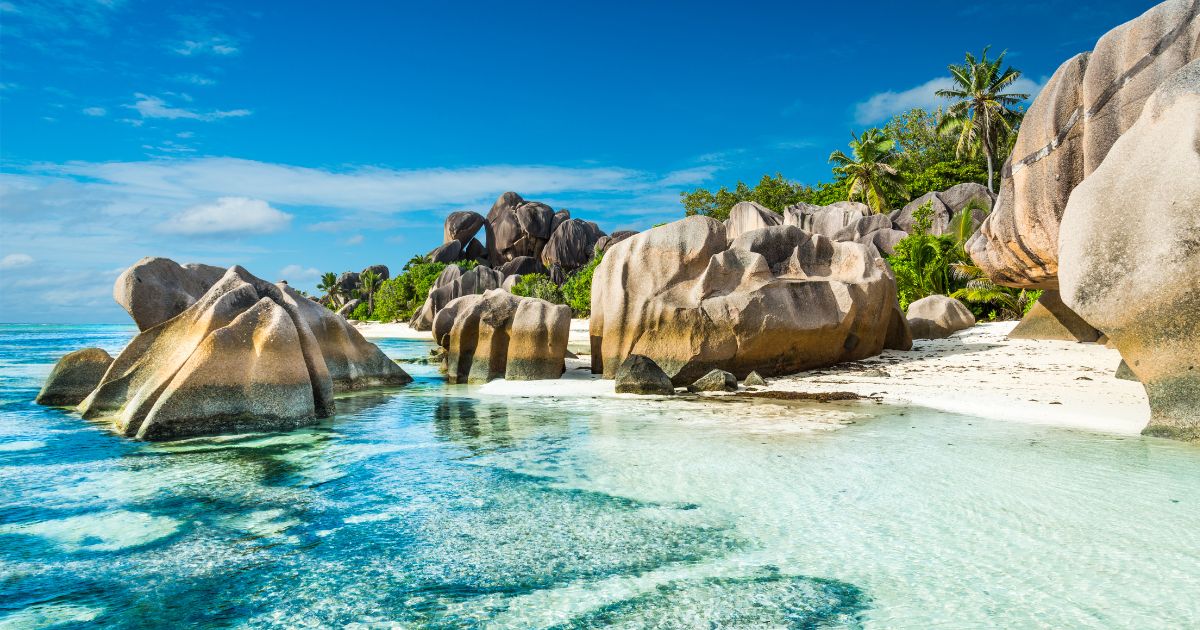
Location:
Boulders Beach is located in Simon’s Town, a charming coastal town on the Cape Peninsula, approximately 40 kilometers (25 miles) south of Cape Town. The beach is part of the Table Mountain National Park and falls within the protected Marine Protected Area.
African Penguin Colony:
Boulders Beach is famous for its colony of African penguins, often referred to as jackass penguins due to their distinct braying sound. This colony is one of the few places in the world where you can observe these adorable creatures up close in their natural habitat.
Boardwalks and Viewing Platforms – Cape Town South Africa:
To protect the penguins and their nesting sites, the beach features a network of wooden boardwalks and viewing platforms that allow visitors to view the penguins without disturbing them. These platforms provide excellent vantage points for watching the penguins as they waddle about, interact, and occasionally take a dip in the ocean.
Sandy Coves and Granite Boulders:
The beach stands out with its distinctive granite boulders, creating sheltered coves and pools. These boulders create a series of small sandy beaches, making Boulders Beach not just a great place for penguin-watching but also for swimming and relaxing.
Penguin Viewing Areas:
SANParks (South African National Parks) oversees the primary penguin viewing zones, which require an entry fee. These designated sections are meticulously crafted to reduce disruption to the penguins and their surroundings, all while granting visitors the opportunity for an up-close encounter.
Wooden Walkways and Interpretive Signs – Cape Town South Africa:
The wooden walkways offer an informative and safe way to explore the area. Interpretive signs provide details about the African penguins’ behavior, conservation efforts, and the unique coastal ecosystem of the region.
Wildlife and Coastal Scenery:
While the penguins are the main attraction, Boulders Beach is also home to other wildlife, including seabirds, dassies (rock hyraxes), and occasional visits from marine life like seals and dolphins. The coastal scenery, with its blue waters, white sands, and dramatic boulders, adds to the natural beauty of the area.
Accessibility:
The boardwalks and platforms are wheelchair-friendly, ensuring that visitors of all abilities can enjoy the penguin-watching experience.
Conservation and Protection:
Boulders Beach plays a pivotal role in the conservation of the endangered African penguin species. The protected area helps create a safe environment for the penguins to breed and thrive.
Responsible Tourism – Cape Town South Africa:
It’s important to follow responsible tourism practices when visiting Boulders Beach. Visitors are urged to uphold a respectful distance from the penguins, refrain from feeding them, and follow any guidelines provided by park authorities.
Cape Winelands – Cape Town South Africa
Just a short drive from Cape Town, the Cape Winelands offer a picturesque landscape of vineyards and historic towns. It’s an excellent opportunity to indulge in wine tasting, fine dining, and exploration.
Traveler’s Experience: Driving through the rolling hills of the Cape Winelands, you’re surrounded by vineyards stretching to the horizon. You can choose from a variety of world-renowned wineries, each with its own character. Sampling exquisite wines, accompanied by gourmet food, creates a sensory experience that lingers long after you leave.
Cape Winelands, situated in the Western Cape of South Africa, is a picturesque region renowned for its captivating landscapes, historic towns, and exceptional wine production. Here are more details about the Cape Winelands and what you can expect when you visit:
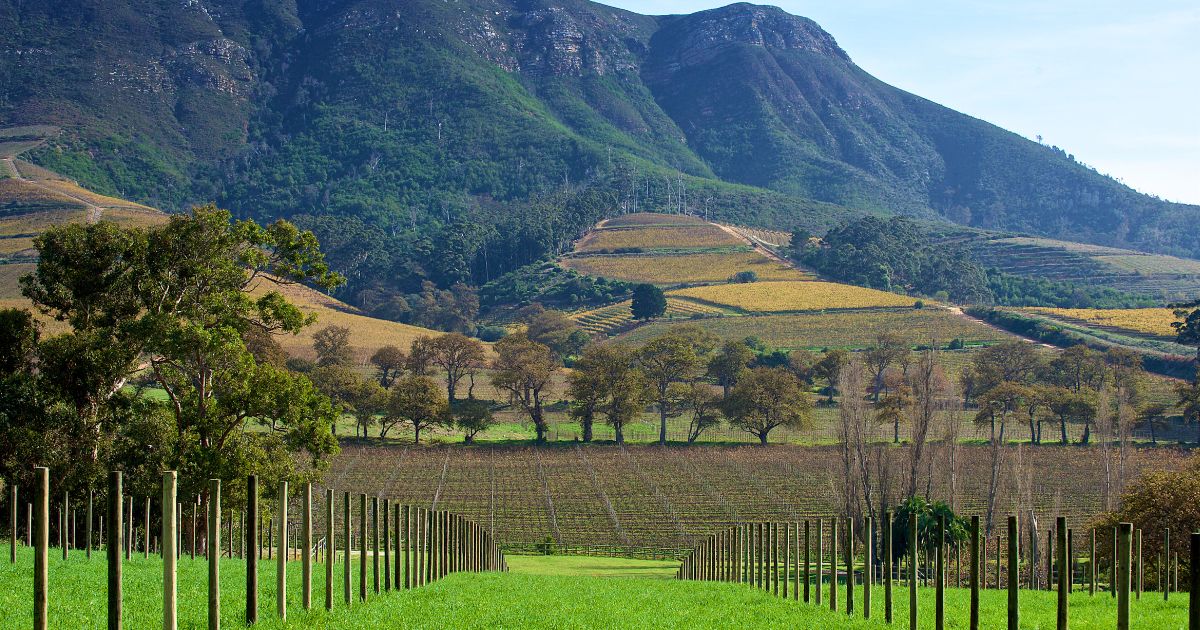
Location:
The Cape Winelands encompass a series of valleys and towns located to the east of Cape Town. The region includes areas like Stellenbosch, Franschhoek, Paarl, and Wellington, each known for its unique character and wine-producing heritage.
Wine Culture and Vineyards:
The Cape Winelands are a wine lover’s paradise, known for their vineyards and wineries. Also the region’s wine culture dates back centuries, and it’s one of the oldest wine-producing areas outside of Europe. So visitors can explore numerous estates, ranging from historic and traditional wineries to modern and innovative producers.
Wine Tasting and Tours – Cape Town South Africa:
Wine tasting is a central activity in the Cape Winelands. Most estates offer wine tastings that allow you to sample a variety of wines, often accompanied by expert guidance from winemakers. Also guided tours provide insights into the winemaking process, from vineyard to cellar, giving you a deeper understanding of the region’s viticulture.
Scenic Landscapes:
The Cape Winelands boast stunning landscapes characterized by rolling hills, vine-covered valleys, and majestic mountain backdrops. The scenery is enhanced by the changing colors of the vineyards throughout the seasons, making it a beautiful destination year-round.
Culinary Delights:
In addition to wine, the Cape Winelands offer a culinary journey with a range of world-class restaurants, farm-to-table dining experiences, and gourmet food markets. Many wineries have on-site restaurants that pair their wines with locally sourced dishes.
Historic Towns:
The Cape Winelands are dotted with charming historic towns that exude a sense of old-world charm. Stellenbosch, for example, is known for its Cape Dutch architecture and oak-lined streets. Franschhoek, with its French Huguenot heritage, is often called the “Food and Wine Capital of South Africa.”
Art and Culture – Cape Town South Africa:
Beyond wine and gastronomy, the Cape Winelands also have a thriving arts and culture scene. You can explore art galleries, craft markets, and cultural events that celebrate the region’s creative spirit.
Outdoor Activities:
The picturesque landscapes of the Cape Winelands offer opportunities for outdoor activities like hiking, cycling, and even hot air balloon rides. Exploring the region on foot or by bike allows you to immerse yourself in its natural beauty.
Festivals and Events:
Throughout the year, the Cape Winelands host various wine festivals and events that showcase the best of the region’s wines, cuisine, and entertainment. These events provide a festive atmosphere and a chance to mingle with locals and fellow travelers.
Accommodation Options – Cape Town South Africa:
The Cape Winelands offer a range of accommodation options, from luxury boutique hotels and guesthouses to charming bed and breakfasts located on wine estates. Staying in the heart of the vineyards allows you to fully experience the tranquility and beauty of the region.
Responsible Wine Tourism:
Many wineries in the Cape Winelands are committed to sustainable and responsible wine production. Also some offer tours that focus on eco-friendly practices, showcasing their efforts to protect the environment and support local communities.
Kirstenbosch National Botanical Garden – Cape Town South Africa
Set against the backdrop of Table Mountain, Kirstenbosch is a stunning botanical garden showcasing a diverse collection of indigenous plants. So it’s a peaceful oasis for nature lovers, offering walking trails, concerts, and a treetop canopy walkway.
Traveler’s Experience: Walking through the garden feels like exploring a botanical wonderland. You’ll encounter unique flora, from vibrant fynbos to ancient cycads. Also the treetop walkway offers a bird’s-eye view of the garden and surrounding landscapes, creating a sense of serenity and connection with nature.
Kirstenbosch National Botanical Garden is a botanical treasure located in Cape Town, South Africa. It’s known for its diverse plant collections, stunning landscapes, and contributions to conservation and education. Here are more details about Kirstenbosch and what you can expect when you visit:

Location:
Kirstenbosch National Botanical Garden is situated at the eastern foot of Table Mountain, providing a picturesque backdrop to the garden. But its location allows for a variety of microclimates, which in turn support a wide range of plant species.
Floral Diversity:
Kirstenbosch showcases a remarkable collection of indigenous plants, particularly those from the Cape Floral Kingdom, also known as the Fynbos biome. This unique and diverse vegetation is known for its incredible variety of forms, colors, and adaptations to different ecological niches.
Gardens and Collections – Cape Town South Africa:
The garden is divided into various themed gardens and collections. Some highlights include the Fynbos Walk, the Fragrance Garden, the Protea Garden, the Cycad Amphitheatre, and the Tree Canopy Walkway (also called the Boomslang). Each area highlights different plant groups and their ecological importance.
Tree Canopy Walkway (Boomslang):
The Tree Canopy Walkway is a raised pathway that winds through the treetops, offering a unique perspective of the garden and surrounding landscapes. It’s a popular attraction that provides breathtaking views and a chance to be immersed in the lush vegetation.
Sculptures and Art:
Throughout Kirstenbosch, you’ll encounter various sculptures and art installations that complement the natural beauty of the garden. Also these artworks often highlight the connection between nature and human creativity.
Concerts and Events – Cape Town South Africa:
Kirstenbosch is famous for its summer concert series, where visitors can enjoy live music performances in a stunning outdoor setting. But these concerts are popular among locals and tourists alike, creating a festive and vibrant atmosphere.
Education and Research:
The garden is not only a place of beauty but also a center for research and education. So it plays a vital role in conserving indigenous flora and promoting sustainable practices. Also The Kirstenbosch Research Center contributes to botanical knowledge and conservation efforts.
Trails and Walks:
Kirstenbosch offers various walking trails that allow you to explore the different sections of the garden. These trails cater to different fitness levels and interests, whether you’re looking for a leisurely stroll or a more challenging hike.
Plant Sales and Gift Shop:
The Kirstenbosch Garden Centre offers a wide range of indigenous plants for sale, allowing visitors to take a piece of the garden’s biodiversity home with them. So the gift shop features an array of souvenirs, books, and locally made crafts.
Picnics and Relaxation – Cape Town South Africa:
Kirstenbosch encourages visitors to bring picnics and enjoy leisure time on its lush lawns. But there are designated picnic areas where you can unwind and soak in the beauty of the surroundings.
Accessibility:
The garden is designed to be accessible to all, with wheelchair-friendly paths and ramps that ensure everyone can enjoy the experience.
Conservation Efforts:
Kirstenbosch is involved in various conservation initiatives, including plant propagation, habitat restoration, and research to protect endangered species.
Visiting Kirstenbosch National Botanical Garden offers an immersive journey through the diverse plant life of South Africa’s Cape region. It’s a place of tranquility, inspiration, and education that showcases the beauty and importance of indigenous flora while providing a serene escape from the city.
Chapman’s Peak Drive – Cape Town South Africa
This scenic coastal drive offers breathtaking views of the Atlantic Ocean, rocky cliffs, and rugged shoreline. So it’s a popular route for road trips and photo opportunities.
Traveler’s Experience: Driving along Chapman’s Peak Drive, every twist and turn reveals a new perspective of the dramatic coastline. So pulling over at designated viewpoints, you can capture awe-inspiring photos or simply stand in awe of the sheer beauty of the landscape.
Chapman’s Peak Drive, often referred to as “Chappies,” is a scenic coastal road in Cape Town, South Africa, known for its breathtaking views and dramatic landscapes. Here are more details about Chapman’s Peak Drive and what you can expect when you venture along this iconic route:
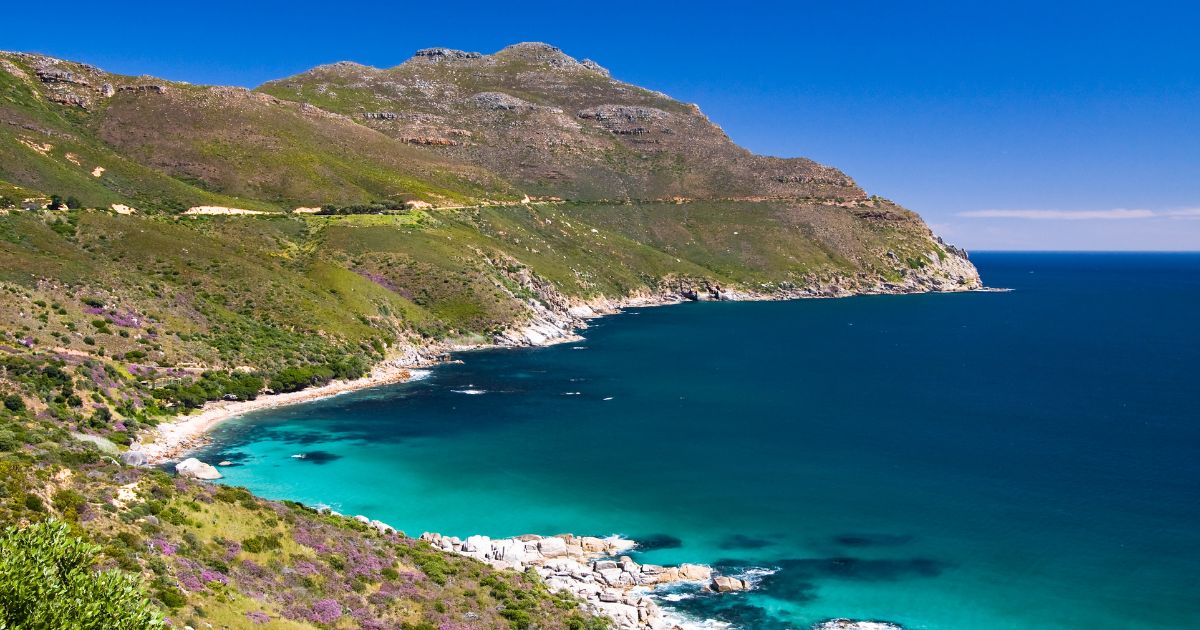
Location:
Chapman’s Peak Drive is located on the Atlantic Coast of the Cape Peninsula, between Hout Bay and Noordhoek. It’s a roughly 9-kilometer (5.5-mile) stretch of road that winds along the rugged cliffs overlooking the ocean.
Scenic Beauty – Cape Town South Africa:
The primary attraction of Chapman’s Peak Drive is its stunning scenery. The road hugs the coastline, offering panoramic views of the Atlantic Ocean, rocky cliffs, sandy beaches, and the nearby Hout Bay Harbor. So the road is surrounded by fynbos vegetation and offers a spectacular contrast between the blue waters and the vibrant flora.
Dramatic Overlooks:
There are several designated viewpoints and pull-offs along the drive where you can stop and take in the breathtaking vistas. But these overlooks provide fantastic photo opportunities, allowing you to capture the beauty of the coastline and the surrounding landscapes.
Sunset and Sunrise:
Chapman’s Peak Drive is particularly popular during sunrise and sunset. But the changing colors of the sky combined with the ocean backdrop create a magical atmosphere that’s perfect for photography or simply taking in the beauty of nature.
Engineering Marvel – Cape Town South Africa:
The road itself is an engineering marvel, with its curves and bends gracefully carved into the mountainside. Also the road’s construction involved the use of dynamite and hand labor, resulting in a masterpiece that seamlessly blends with the natural landscape.
Leisurely Drive:
Chapman’s Peak Drive is designed for leisurely exploration. But the speed limit is relatively low, allowing drivers to take their time and fully appreciate the surroundings. The road’s gentle curves and well-maintained surface make it a comfortable drive for both locals and tourists.
Cycling and Hiking:
In addition to driving, Chapman’s Peak Drive is a popular route for cyclists and hikers. Cyclists are drawn to the challenging uphill climbs and rewarding views, while hikers can access trails that lead to even more viewpoints and secluded beaches.
Toll Road – Cape Town South Africa:
Chapman’s Peak Drive is a toll road, which means there is a fee to use the route. Also the fee contributes to the maintenance and conservation of this scenic route.
Safety Precautions:
While Chapman’s Peak Drive offers incredible views, it’s essential to stay focused on the road and drive cautiously. The road can be narrow and winding, and the safety of both drivers and pedestrians is a priority.
Coastal Flora and Fauna:
The drive offers an opportunity to appreciate the diverse flora and fauna of the Cape Peninsula. So keep an eye out for various bird species, including the Cape Sugarbird, and the unique vegetation that characterizes the fynbos biome.
Local Cuisine and Stops – Cape Town South Africa:
The drive connects Hout Bay and Noordhoek, both of which offer opportunities to stop for refreshments or enjoy a meal. Hout Bay, in particular, is known for its seafood restaurants and charming harbor.
Bo-Kaap – Cape Town South Africa
Famous for its colorful houses and rich Cape Malay culture, the Bo-Kaap neighborhood is a feast for the eyes and a celebration of diversity. So it’s a great place to explore local cuisine and learn about the history of the area.
Traveler’s Experience: Wandering through the streets of Bo-Kaap, you’re surrounded by a kaleidoscope of colors that reflect the cultural vibrancy of the community. Also visiting a local spice shop, you’re greeted by aromatic scents and a chance to learn about the flavors that define Cape Malay cuisine.
Bo-Kaap, also known as the Cape Malay Quarter, is a vibrant and culturally rich neighborhood in Cape Town, South Africa. So known for its colorful houses, rich history, and Cape Malay heritage, Bo-Kaap is a must-visit destination that offers a unique glimpse into the city’s diverse culture. Here are more details about Bo-Kaap and what you can expect when you explore this charming neighborhood:
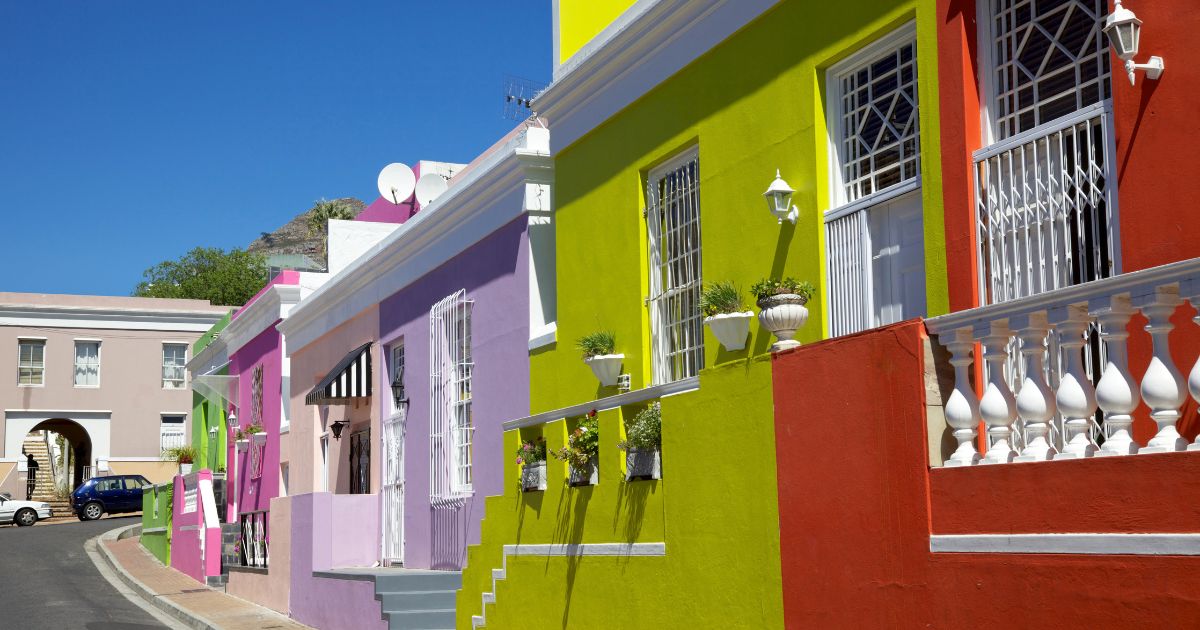
Historical Background:
Bo-Kaap’s origins trace back to the 18th century when it was founded as a residential enclave for enslaved and liberated slaves, a significant number of whom were transported to Cape Town by the Dutch East India Company. However, the neighborhood’s architectural design and cultural fabric bear a profound imprint from the Indonesian, Malaysian, and African heritage of its inhabitants.
Colorful Houses – Cape Town South Africa:
One of the most iconic features of Bo-Kaap is its rows of colorful houses. So the tradition of painting the houses in vibrant shades began in the 19th century and is believed to have been a way for residents to express their freedom and individuality after years of oppression. Also today, the colorful facades contribute to the neighborhood’s distinctive charm.
Cape Malay Cuisine:
Bo-Kaap is renowned for its rich culinary heritage, particularly Cape Malay cuisine. Also visitors can indulge in a variety of traditional dishes that reflect the fusion of flavors from the Malay Archipelago, India, and Africa. Spices like cinnamon, cardamom, and cloves feature prominently in dishes such as bobotie (a savory minced meat dish) and samosas.
Heritage and Culture – Cape Town South Africa:
Bo-Kaap is home to various cultural and religious landmarks, including the Auwal Mosque, the oldest mosque in South Africa, established in 1794. So the neighborhood’s cobbled streets, historical sites, and vibrant community events provide insights into the Cape Malay way of life and its enduring traditions.
Bo-Kaap Museum:
The Bo-Kaap Museum offers a deeper understanding of the neighborhood’s history and culture. Housed in a 1768 building, the museum showcases artifacts, photographs, and exhibits that depict the daily lives of the residents, their struggles, and their contributions to Cape Town’s cultural fabric.
Community and Festivals:
Bo-Kaap is recognized for its robust community spirit, and visitors might find chances to interact with locals and gain insight into their narratives. The neighborhood also hosts vibrant events and festivals, such as the Cape Town Minstrel Carnival (Kaapse Klopse), which celebrates Cape Malay culture through music, dance, and colorful costumes.
Photography and Exploration – Cape Town South Africa:
The colorful streets and quaint architecture of Bo-Kaap make it a favorite spot for photographers and travelers seeking unique visuals. Also exploring the narrow streets, you’ll find historic houses adorned with wooden shutters, flower boxes, and intricate ironwork.
Culinary and Cultural Tours:
Guided tours of Bo-Kaap provide an immersive experience, allowing you to learn about the history, culture, and cuisine of the neighborhood from knowledgeable locals. So these tours often include visits to homes, spice shops, and culinary demonstrations.
Respectful Visits – Cape Town South Africa:
When visiting Bo-Kaap, it’s important to be respectful of the residents’ privacy and cultural practices. Certain houses are privately owned, making it prudent to explore with a sense of consideration.
Souvenirs and Crafts:
Bo-Kaap is also a great place to find unique souvenirs, including handcrafted items, textiles, spices, and local products that reflect the area’s culture.
Llandudno Beach – Cape Town South Africa
A hidden gem among Cape Town’s many beaches, Llandudno offers a secluded stretch of white sand and clear blue waters, ideal for relaxation and tranquility.
Traveler’s Experience: Arriving at Llandudno Beach feels like discovering a well-kept secret. Also the pristine shoreline and peaceful atmosphere make it an idyllic spot to unwind, read a book, or take a leisurely walk along the water’s edge.
Llandudno Beach is a hidden gem located on the Atlantic coast of Cape Town, South Africa. Known for its pristine beauty, secluded atmosphere, and stunning natural surroundings, Llandudno Beach offers a tranquil and idyllic escape from the bustling city. Here are more details about Llandudno Beach and what you can expect when you visit:
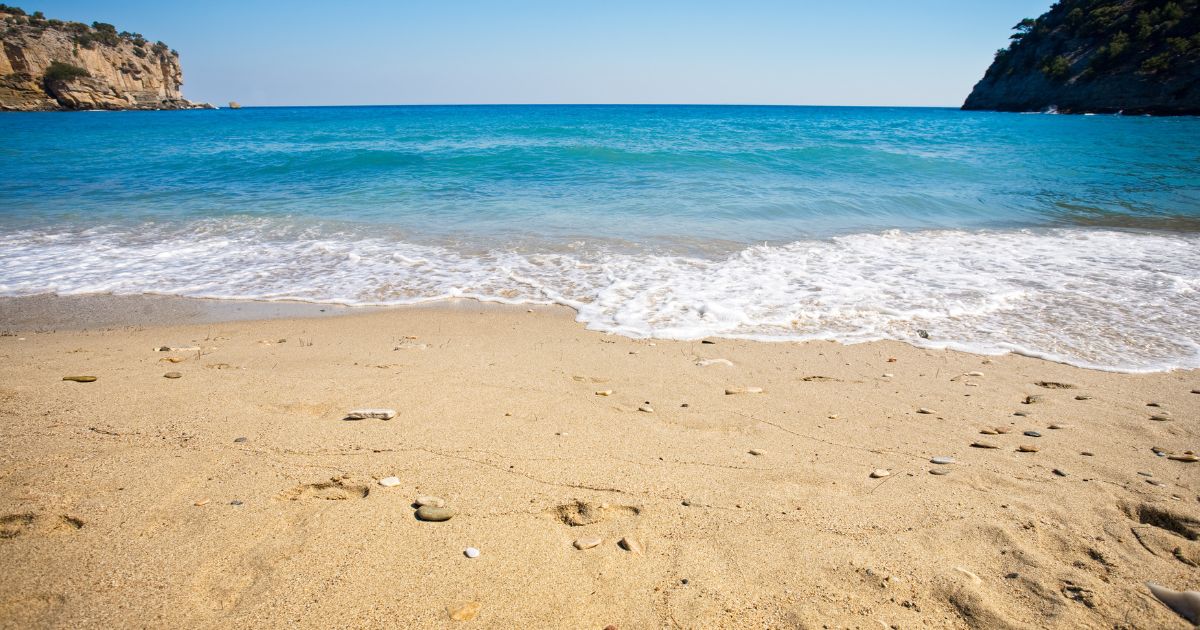
Location:
Llandudno Beach is situated between Camps Bay and Hout Bay, along Victoria Road. Also its relatively secluded location adds to its charm, making it a haven for those seeking a peaceful and less crowded beach experience.
Natural Beauty:
Dramatic granite boulders frame the beach, while lush vegetation surrounds it, resulting in a rugged and pristine visage. Also the contrast between the white sand, blue ocean, and rugged coastline creates a picturesque landscape that’s perfect for relaxation and rejuvenation.
Secluded Atmosphere – Cape Town South Africa:
Llandudno Beach is known for its peaceful and uncrowded ambiance. Its hidden location makes it a favorite among locals who are looking to escape the hustle and bustle of more popular beaches. Also it’s an ideal spot for those seeking solitude or a quiet place to unwind.
Swimming and Surfing:
The beach is characterized by its clear and cool waters, making it suitable for swimming. However, the ocean can be quite cold due to its location on the Atlantic coast. Llandudno Beach is also popular among surfers, especially those who enjoy more challenging waves.
Sunbathing and Relaxation – Cape Town South Africa:
The expansive sandy stretch is perfect for sunbathing, picnicking, or simply enjoying the sound of the waves crashing on the shore. But the lack of crowds adds to the sense of tranquility, allowing visitors to truly unwind.
Scenic Views:
Llandudno Beach offers stunning panoramic views of the Atlantic Ocean and the surrounding coastline. Also the vantage point from the beach provides excellent opportunities to take in breathtaking sunsets over the ocean.
Tide Pools and Rock Pools:
Exploring the shoreline reveals a variety of tidal pools and rock pools, which can be fascinating to explore during low tide. So these pools are home to various marine life and offer a unique way to engage with the coastal environment.
Limited Amenities – Cape Town South Africa:
Llandudno Beach maintains a relatively undeveloped status in terms of amenities. Restaurants or shops are not situated directly on the beach, thus visitors are recommended to bring their own food, water, and beach essentials.
Parking and Access:
Limited parking is accessible along Victoria Road, and reaching the beach involves descending a brief flight of stairs. Also the accessibility may be challenging for those with mobility issues.
Responsible Beach Etiquette:
Visitors are urged to uphold responsible beach etiquette by showing respect for the natural environment, refraining from littering, and being considerate of local residents and their privacy.
Woodstock and Biscuit Mill – Cape Town South Africa
The Woodstock neighborhood is a hub of creativity, filled with art studios, galleries, and trendy eateries. So the Old Biscuit Mill hosts a vibrant market where you can sample local foods and shop for artisanal products.
Traveler’s Experience: Exploring Woodstock’s artistic scene, you’ll find vibrant street art, innovative designs, and a sense of urban renewal. Also the Biscuit Mill’s market is a sensory delight, offering a variety of foods, crafts, and a lively atmosphere that embodies Cape Town’s modern spirit.
Woodstock is a vibrant and eclectic neighborhood in Cape Town, South Africa, known for its creative atmosphere, artistic community, and cultural diversity. So the Old Biscuit Mill is a popular destination within Woodstock that houses an artisanal market and various shops, galleries, and restaurants. Here’s more information about both Woodstock and the Old Biscuit Mill:
Woodstock:
- Artistic and Creative Hub: Woodstock has transformed from an industrial area into a creative hub with a thriving arts and crafts scene. It’s home to numerous galleries, studios, and design workshops, making it a hotspot for local artists and artisans.
- Cultural Diversity: The neighborhood’s rich history and diverse population have contributed to its unique character. You’ll find a mix of cultures, languages, and backgrounds that create a vibrant and inclusive atmosphere.
- Street Art: Woodstock is renowned for its captivating street art and murals. Also walking through the streets, you’ll encounter colorful and thought-provoking artwork that adds to the neighborhood’s creative energy.
- Antique and Vintage Stores: Antique shops and vintage boutiques dot the area, rendering it a treasure trove for enthusiasts of distinctive discoveries and retro fashion.
- Coffee Shops and Cafés: Woodstock is home to a variety of trendy coffee shops and cafés where you can enjoy artisanal coffee, pastries, and light meals.
The Old Biscuit Mill:
- Historical Site: The Old Biscuit Mill is a converted industrial space that dates back to the 19th century. It was once a mill that produced biscuits and other products. Today, it has undergone revitalization and transformed into a dynamic market and retail area.
- Neighbourgoods Market: The Neighbourgoods Market at the Old Biscuit Mill is a popular attraction. Also held on Saturdays, it features a diverse range of food stalls, artisanal products, fresh produce, and crafts. It’s a great place to sample local and international cuisine.
- Design and Fashion Shops: The Old Biscuit Mill is home to a variety of boutiques, design studios, and fashion shops. Also you can find unique clothing, accessories, and home décor items that showcase local creativity.
- Galleries and Workshops: The space also hosts art galleries, design workshops, and exhibitions, making it a hub for the local creative community.
- Restaurants and Cafés: The Old Biscuit Mill offers a range of dining options, from casual eateries to upscale restaurants. You can enjoy a variety of cuisines, from South African to international flavors.
- Events and Festivals: The Old Biscuit Mill occasionally hosts events, festivals, and live performances that showcase local talent and provide entertainment for visitors.
Two Oceans Aquarium – Cape Town South Africa
Situated at the V&A Waterfront, this aquarium showcases marine life from both the Atlantic and Indian Oceans. So it’s an educational and entertaining experience for visitors of all ages.
Traveler’s Experience: Walking through the aquarium’s tunnels, you’re surrounded by a mesmerizing underwater world. Also watching sharks, rays, and colorful fish glide overhead provides a unique perspective on marine life, inspiring a deeper appreciation for ocean conservation.
The Two Oceans Aquarium is a popular attraction located at the V&A Waterfront in Cape Town, South Africa. It offers visitors an immersive and educational experience focused on the marine life found in both the Indian and Atlantic Oceans, which converge off the southern tip of the African continent. Here are more details about the Two Oceans Aquarium and what you can expect during your visit:
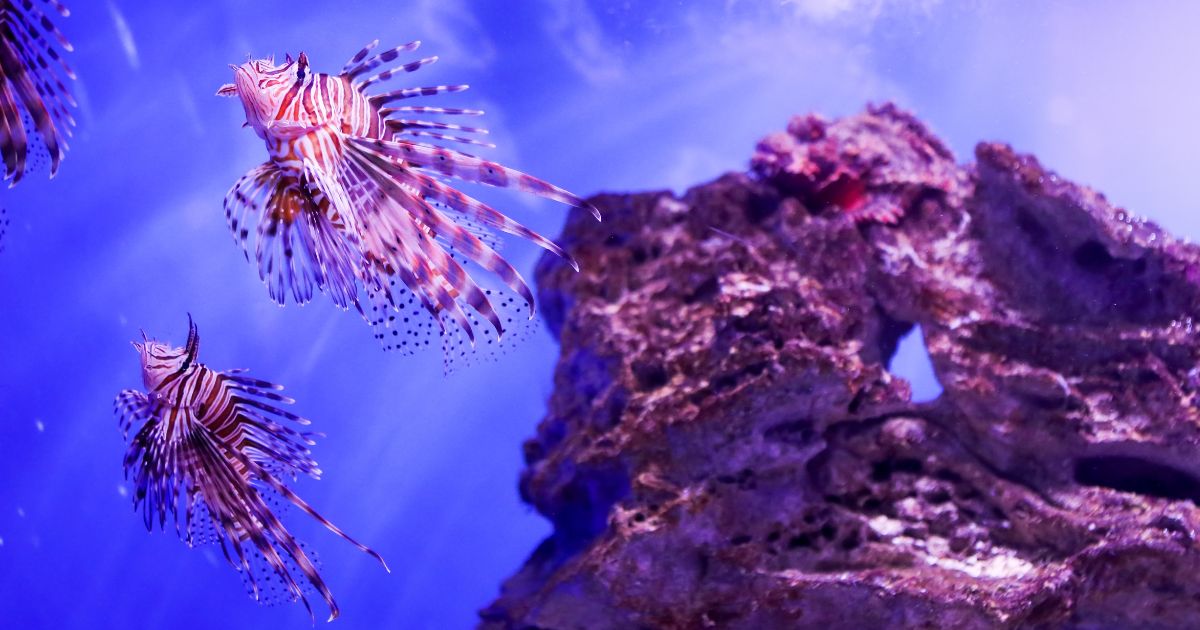
Location:
The Two Oceans Aquarium is situated at the V&A Waterfront, a bustling shopping, dining, and entertainment district in Cape Town. Its prime location by the ocean makes it a convenient and attractive destination for both tourists and locals.
Marine Diversity – Cape Town South Africa:
The aquarium derives its name from the convergence of the Indian Ocean and the Atlantic Ocean at the southern tip of Africa. So it has gained recognition for featuring an extensive array of marine life native to these two oceans. This encompasses fish, sharks, turtles, rays, and diverse invertebrates.
Exhibits and Habitats:
The aquarium features several thematic exhibits and habitats that replicate different marine environments. Visitors can explore kelp forests, rocky shores, coral reefs, and open ocean tanks. Furthermore, each exhibit is meticulously designed to offer an authentic representation of the marine ecosystems present in the surrounding oceans.
Predator Exhibit:
One of the most popular attractions is the predator exhibit, which houses various shark species, including ragged-tooth sharks, leopard sharks, and even the formidable great white shark. So the exhibit offers a chance to observe these majestic creatures up close.
Touch Pools and Interactive Displays:
The aquarium offers interactive touch pools where visitors can gently touch and interact with marine creatures such as starfish and sea anemones. But aInteractive displays and educational activities help visitors learn about the marine life, conservation efforts, and the importance of ocean health.
Penguin Exhibit – Cape Town South Africa:
The African penguin colony is a highlight of the Two Oceans Aquarium. Also visitors can watch these playful and charismatic birds in a habitat designed to mimic their natural environment.
Education and Conservation:
The Two Oceans Aquarium places a strong emphasis on education and conservation.
So visitors have the opportunity to learn about the challenges that marine ecosystems face and the ongoing efforts to safeguard and conserve ocean life.
Behind-the-Scenes Tours – Cape Town South Africa:
The aquarium provides behind-the-scenes tours that grant a deeper understanding of exhibit maintenance, marine life care, and the aquarium’s conservation initiatives.
Guided Tours and Presentations:
Knowledgeable staff members regularly conduct guided tours and presentations. Also these sessions offer insights into the habits, behaviors, and adaptations of various marine species.
Accessibility:
The design of the Two Oceans Aquarium aims to ensure accessibility for all visitors, including those with mobility challenges. So elevators and ramps make it easy to navigate the different levels of the facility.
Family-Friendly – Cape Town South Africa:
The aquarium is a family-friendly attraction with activities and exhibits suitable for visitors of all ages. Children, in particular, can benefit from the educational aspects and interactive displays.
Township Tours – Cape Town South Africa
Exploring Cape Town’s townships provides insight into the city’s complex history and vibrant culture. Also guided tours offer the chance to interact with local communities and learn about their daily lives.
Traveler’s Experience: Participating in a township tour is a humbling experience that challenges preconceived notions and fosters genuine connections. So engaging with residents, visiting community projects, and gaining a better understanding of the challenges and triumphs of these areas can be eye-opening and transformative.
Township tours offer visitors a unique opportunity to explore and engage with the vibrant and diverse communities that make up the townships of South Africa. Also these tours provide insights into the history, culture, and daily life of residents in these areas. Here are more details about township tours and what you can expect during your experience:
Definition of Townships:
During the apartheid era in South Africa, townships were historically designated as residential areas for non-white residents. Also these areas often faced significant challenges in terms of infrastructure, housing, and economic opportunities. So today, many townships continue to be home to diverse communities with their own rich cultures and stories.
Cultural Exchange:
Township tours offer an opportunity for cultural exchange, allowing visitors to connect with local residents, learn about their lifestyles, and gain insights into their traditions, customs, and daily routines.
Guided Tours – Cape Town South Africa:
Typically, knowledgeable locals who are well-versed in the area’s history and culture guide township tours. Also these guides provide context and information about the communities you’ll be visiting.
Visiting Local Homes:
Some tours may include visits to local homes, giving you a chance to interact with residents and learn about their lives firsthand. So this can be a humbling and eye-opening experience.
Community Projects and Initiatives:
Many township tours encompass visits to community projects and initiatives designed to enhance residents’ lives. Also these projects might focus on education, healthcare, arts, and entrepreneurship. In additional by supporting these initiatives, visitors can contribute to positive change within the communities.
Arts and Crafts:
Townships are often centers of artistic expression, and some tours may include visits to art studios, galleries, and craft workshops. But this offers a chance to learn about local artistic traditions and purchase unique handmade souvenirs.
Township Cuisine – Cape Town South Africa:
Tours might include opportunities to taste traditional South African and township dishes. But sampling local cuisine can be an important part of understanding a community’s culture and history.
Historical Context:
Guides often provide historical context about the apartheid era and the struggle for equality and civil rights. So learning about the challenges that townships have faced and continue to address can lead to a deeper appreciation of South Africa’s complex history.
Responsible Tourism:
When participating in township tours, it’s important to do so with respect and sensitivity. Always follow the guidance of your guide, ask permission before taking photos of people, and avoid treating the tour as a “safari” to observe poverty. Also choose operators that prioritize sustainable and responsible tourism practices.
Tours Offered:
Various cities across South Africa, including Cape Town, Johannesburg, and Durban, offer township tours. So each city has its own unique townships with distinct cultures and stories.




[…] also – Cape Town South Africa – Best places you need to […]
[…] also – Cape Town South Africa – Best places you need to […]
[…] also Cape Town South Africa – Best places you need to […]
May I have information on the topic of your article?
[…] also – Cape Town South Africa – Best places you need to […]
[…] also – Cape Town South Africa – Best places you need to […]
[…] also – Cape Town South Africa – Best places you need to […]
This is such a great post, and was thinking much the same myself. Another great update.
[…] also – Cape Town South Africa – Best places you need to […]